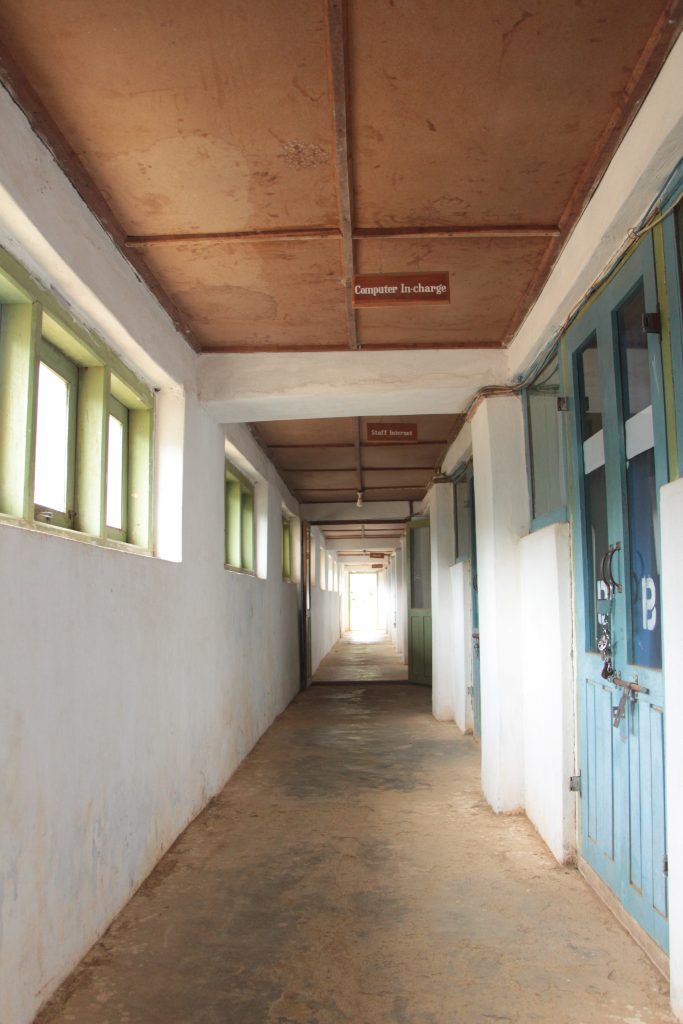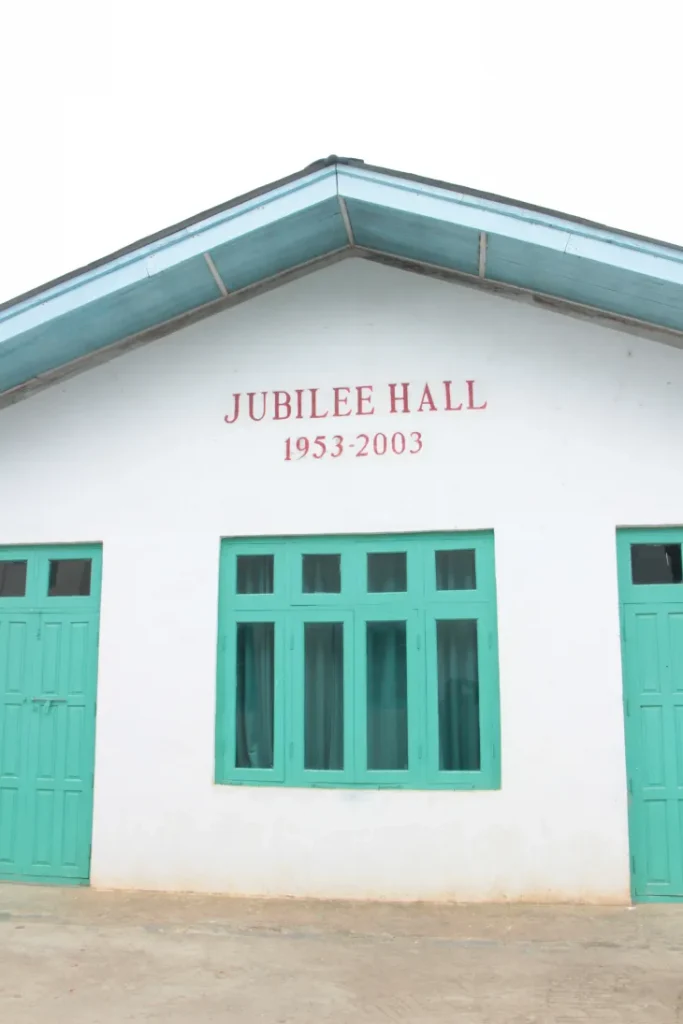Nitha Bor Siangpum explores the sustainability of non-profit higher education in Chin State.

Myanmar’s higher education (HE) sector is stunted in almost every respect, due to prolonged underinvestment and over-centralization. Research has shown that the sector is ‘poor by any standard’ and is facing enormous challenges. For one, the state’s provision of HE is inadequate. Only 11% of Myanmar’s youth, which refers to a small number of middle-class students, have access to state-run higher education. Thus, the private sector, which includes both for-profit and non-profit institutions, has become an important HE provider in Myanmar. Despite this, private education provision, particularly of the non-profit sector, is largely overlooked by studies conducted on Myanmar’s education. Non-profit private higher education institutions (HEIs) deserve more research attention because they not only patch up the state’s weaknesses in educational provision, but they also make HE accessible and affordable in the country’s peripheries.
Therefore, in a study conducted under a research fellowship program, from which this Tea Circle article is adapted, I discussed what it would take to sustain non-profits’ provision of higher education in Chin State, one of Myanmar’s most remote areas. The study was motivated by my volunteering experience as a teacher at the Chin Christian University, a non-profit private university in Hakha, Chin State. The study focused on how these HEIs can best use the readily available resources rather than acquiring more.
Myanmar’s higher education sector is highly centralized and state-controlled. All of the country’s 174 public higher education institutions (HEIs) are overseen by the government, the European Union-funded project CHINLONE reported in 2018. CHINLONE stands for ‘Connecting Higher Education Institutions for a New Leadership in National Education’. It is also the name of a Myanmar traditional sport that emphasizes cooperation and teamwork. Eight ministries are involved in managing the HEIs, including the Ministry of Education.
In Myanmar, private HEIs are not HEIs in a legal sense, regardless of whether they are for-profit or non-profit. They are registered as either companies under the Ministry of Trade and Commerce or as NGOs. In mid-2020, the government allowed private schools offering higher education to register, using a form called the “Private HEIs Form”. The government stated that the private school registration would be a pathway for these institutions to gain accreditation. However, private HEI registration was closed later that year before any HEIs were approved.
Now, let’s have a peek at how public HEIs are distributed across the country. In 2012, there were 164 public HEIs in the country. Mandalay had 36 HEIs, Yangon 33, Sagaing 14, and the country’s poorest states—Chin and Kayah state—had 3 public HEIs respectively, as reported in the 2013 Myanmar Comprehensive Education Sector Review (CESR) Report.
The 3 public HEIs listed under Chin State in the CESR report, Kalay University, Technological University (Kalay) and University of Computer Studies (Kalay), are all situated in Kalay town in Sagaing Region. Kalay is at least a 6 hour-drive from Chin State’s capital, Hakha, depending on prevailing weather and road conditions, which is often at its worst during the rainy season.

Thus, in fact, there were no public universities in Chin State in 2012. The first public university, Hakha University, came to Hakha only in November 2016.
Why is that a problem? An average Chin family would probably have to sell a pig or two to get to Kalay. Living expenses would cost even more. Getting a university degree is expensive for marginalized Chin youth, given that they would have to travel far away from home. Access to higher education is also a problem elsewhere in Myanmar, but Chin State’s situation is particularly dire, due to Chin State’s remote geography and the government’s failure to establish sufficient HEIs there.
As of 2021, Chin State has 6 public HEIs; namely Hakha University, Hakha Education College, Government Technical Institute, Hakha Midwife Training School, Falam Nursing Training School and Lungpi Agriculture High School. However, only one of these is a university.
So, even today in Chin State, community-run non-profit HEIs are the oldest, most well-established, and most prevalent type of higher education. Most of them are Bible Schools run by the church community. Six public HEIs and about 13 non-profit HEIs currently exist in Chin State. Among them are Chin Christian University, Chin Christian Institute of Theology, Victoria Academy and Chin Initiative for Sustainable Society, to name a few. None of them are registered as HEIs under the MoE. There may be more than thirteen as I could have missed an institution or two in the counting. No official list of these non-profit HEIs exists.
The community provision of higher education in Chin State dates back to 1953, when the first Bible school opened in Falam. The main purpose of non-profit HEIs has always been to make higher education accessible to local youth who cannot afford a university education in bigger cities. Through higher education, these community HEIs also allow Chin students to maintain their ethnic identity, culture and history amidst a Bamar-dominated education system.

As primarily self-funding institutions, these HEIs are faced with financial shortages from time to time. Hence they often struggle with poor physical infrastructure and scarcity of resources. Not having enough qualified teachers, poor resource management, and inadequate tracking of students’ progress are also some challenges that exist within these HEIs. Many of their students undertake Distance Education in public HEIs on the side in order to obtain a formal degree that is recognized by the Myanmar state. This means that non-profit HEIs have to adjust their schedules based on public HEIs.
Another challenge that non-profit HEIs face is the dilemma of which language of instruction to teach in. Language may seem like the last problem faced by local HEIs; however, there are at least 50 Chin dialects spoken in Chin State. So, Chin HEIs are also faced with very diverse classroom in terms of languages. Often, Burmese language, which is everyone’s second or third language, is used in class.
Even so, the advantages of community-run HEIs outweigh these challenges. For one, students consider the quality of education provided by them better than that provided in state-run HEIs. Teaching methods are different and so is the curriculum. For instance, private HEIs use more participatory teaching methods compared to public HEIs, so students learn more effectively.
The root cause of these advantages is that private HEIs have institutional autonomy, unlike public HEIs. My study sought to show why institutional autonomy is important, and how private HEIs can take better advantage of this situation.
So, what exactly is institutional autonomy? There are four internationally recognized aspects of institutional autonomy discussed in the 2018 CHINLONE report: organizational, academic, staffing and financial. To give a better understanding of this concept, I will paraphrase the CHINLONE’s explanation in the next paragraphs.
Organizational autonomy refers to an institution’s capacity to determine its internal organization and decision-making process. This includes the election and dismissal of its leaders and its ability to change its academic structures.
Academic autonomy is an institution’s freedom to manage their academic affairs. These affairs include academic programs and contents, student selection and evaluation criteria, the number of students to be admitted, the curriculum, and teaching methods.
Having institutional autonomy in staffing gives non-profit private HEIs the right to recruit and manage their human resources. For example, a HEI with institutional autonomy could hire an English professor from England to teach, visa issues aside. Or it could ask a local businessman to teach marketing. None of these teacher appointments would require approval from the Ministry of Education.
Financial autonomy gives non-profit HEIs the ability to manage their funds and allocate their budget. However, financial autonomy can push a lot of responsibilities and duties onto HEIs, as they will need to generate their own funds without a stable source of income.
These are the four aspects of institutional autonomy that the private HEIs enjoyed compared to public HEIs, despite not being able to issue formal degrees that are recognized in Myanmar, at least until the coup on 1 February 2021. How their institutional autonomy will be affected by the coup is uncertain.
In my research about this topic (which will be published later this year), I argue that non-profit HEIs should take better advantage of their institutional autonomy. This will not only improve their quality but also raise their competitiveness in the eyes of funders, and thereby sustain their work. How?
Since this is not a full research report, I will only focus on one specific area which I think is essential and doable for non-profit HEIs. In particular, I recommend that non-profit HEIs enhance their networks and pursue collaborations with others, whether with local or international institutions.
The aforementioned non-profit HEIs in Chin State already have partnerships and collaborations with both domestic and foreign organizations or HEIs. Through international partnerships, students and staff have opportunities to pursue further studies at partner institutions abroad and participate in study exchange programs. Surprisingly, these non-profit HEIs have more connections with other institutions abroad than between themselves. While international connections are important, domestic connections should not be overlooked as these non-profit HEIs can help each other grow in many ways through collaborations. In fact, some education leaders have mentioned the need for more domestic partnerships during my interviews but none of them had proactive plans to take the initiative. One principal remarked, ‘we (Chin HEIs leaders) always wait for a third party to initiate things like this, this is our weakness’.
In my opinion, networking between similar HEIs within the whole country, especially within Chin State, is crucial for the sustainability of non-profit private HEIs for the following reasons. First, it might give the non-profit sector a better chance of impacting the national higher education policy as a stronger and more consolidated network. In the long run, this could allow non-profit HEIs to gain legal status and accreditation, so that students will no longer have to pursue parallel degrees at public universities. Second, resource sharing might be possible through networking as well, which will increase the quality of education in HEIs. Last but not least, networking will contribute to the organizational development of each institution by allowing them to learn from each other. It is through being with others that we become our better selves.
Nitha Bor Siangpum received her Masters degree in Global Development and Planning from University of Agder (Norway) in 2017. She is a researcher/research consultant based in Norway and Burma. This research report is adapted from her research project done at a local research institute.
Like This Article
March 21, 2025
September 16, 2024

Center for Southeast Asian Studies, Asian Institute 1 Devonshire Place Toronto, Ontario, M5S 3K7, Canada
©TeaCircle All Rights Reserved 2023